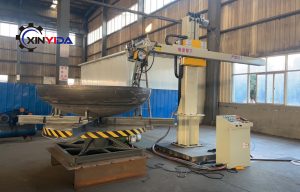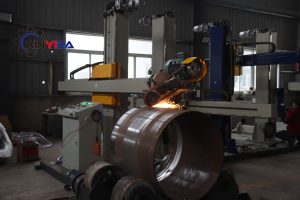How to polish to a mirror finish?
Mirror polishing is an advanced surface treatment technology, the goal of which is to make the surface of metal or other materials achieve a mirror-like finish. Mirror polishing plays a vital role in many industries, such as jewelry, automobiles, medical devices, etc. Below, we will introduce in detail how to achieve mirror polishing effect.

1. Preliminary preparation
Before starting mirror polishing, the first thing to do is to properly pre-treat the material. This includes cleaning the material to remove impurities such as oil, dust, etc., and rough machining the material to remove large unevenness and burrs. The quality of pre-treatment directly affects the effect of subsequent polishing.
2. Mechanical polishing
Mechanical polishing is the main step in mirror polishing, which includes three main stages: rough grinding, fine grinding and polishing.
(1)Rough grinding: Use coarser abrasives and greater pressure to remove large particles of impurities and unevenness on the surface of the material. The purpose of this stage is to lay a good foundation for subsequent fine grinding and polishing.
(2)Fine grinding: After rough grinding, use finer abrasives and less pressure to further eliminate small unevenness on the material surface. The goal of this stage is to make the surface as flat as possible.
(3)Polishing: Polishing is the final and most important step of mirror polishing. In this stage, special polishing tools and polishing agents are used to rub the material surface repeatedly in a gentle manner until a mirror-like finish is achieved. The choice and use of polishing agents have a crucial impact on the polishing effect.

3. Chemical polishing
In some cases, mechanical polishing may not be able to completely achieve a mirror finish, so chemical polishing can be considered. Chemical polishing uses chemical reactions to remove microscopic unevenness on the surface of a material to achieve a smooth finish. However, it should be noted that chemical polishing may change the chemical composition and physical properties of the material, so adequate testing and evaluation is required before use.
4. Treatment after polishing
After achieving the mirror polishing effect, some subsequent treatments are required to ensure the durability and stability of the polishing effect. This includes cleaning polishing agent residues, checking surface quality, applying protective coatings, etc. These treatment steps can further improve the polishing effect and extend the service life of the material.
Mirror polishing is a complex and delicate work that requires adequate preparation and careful operation. By selecting the appropriate polishing method and tools, controlling the parameters during the polishing process, and performing appropriate post-processing, we can achieve the ideal mirror polishing effect.

